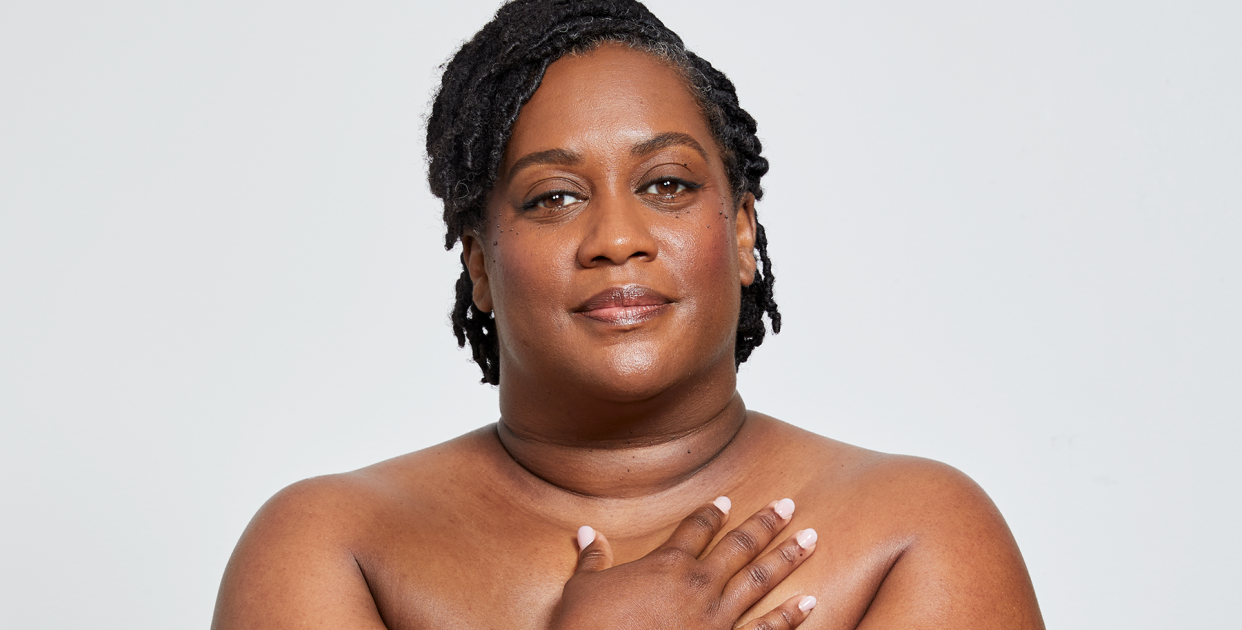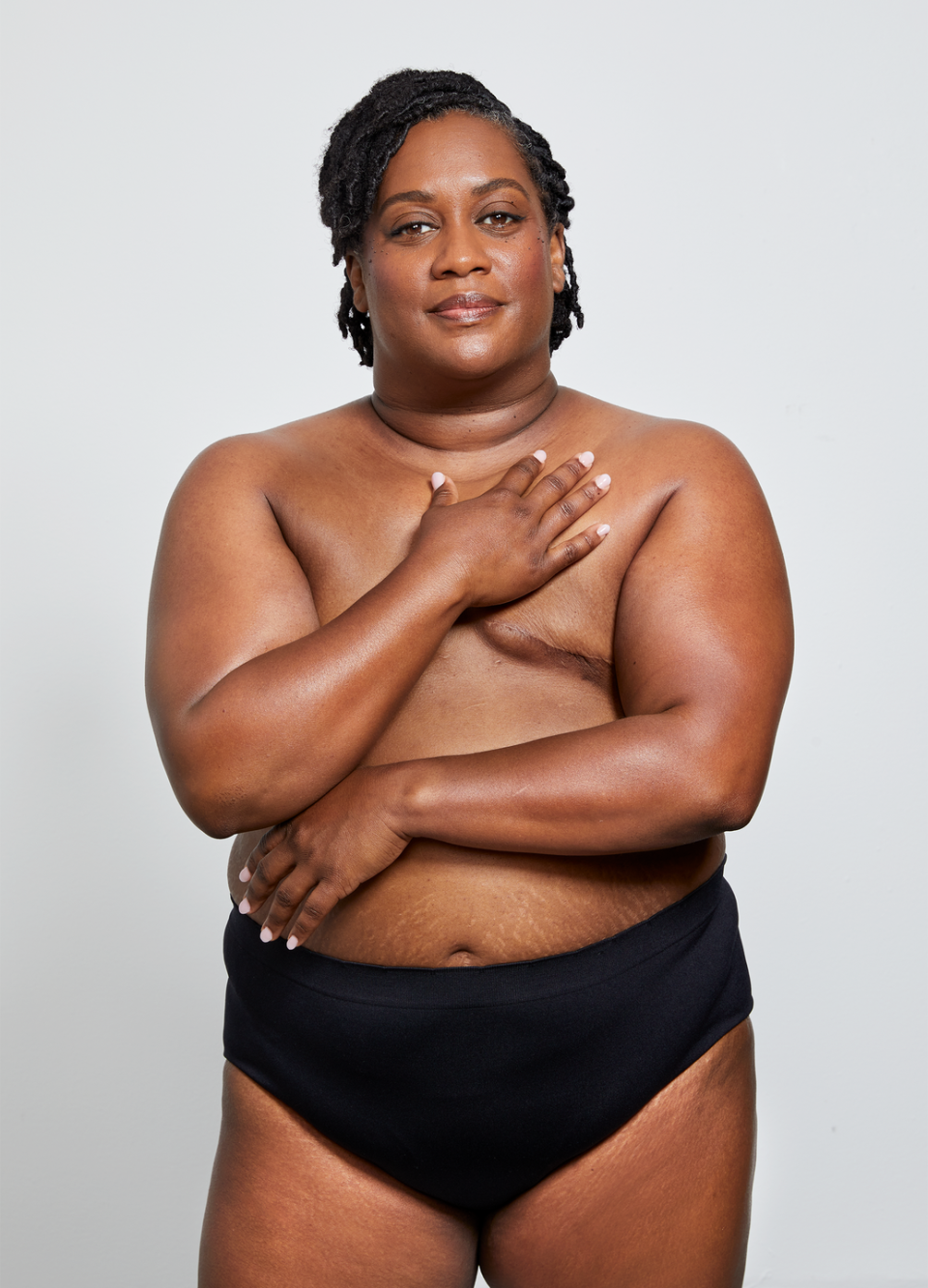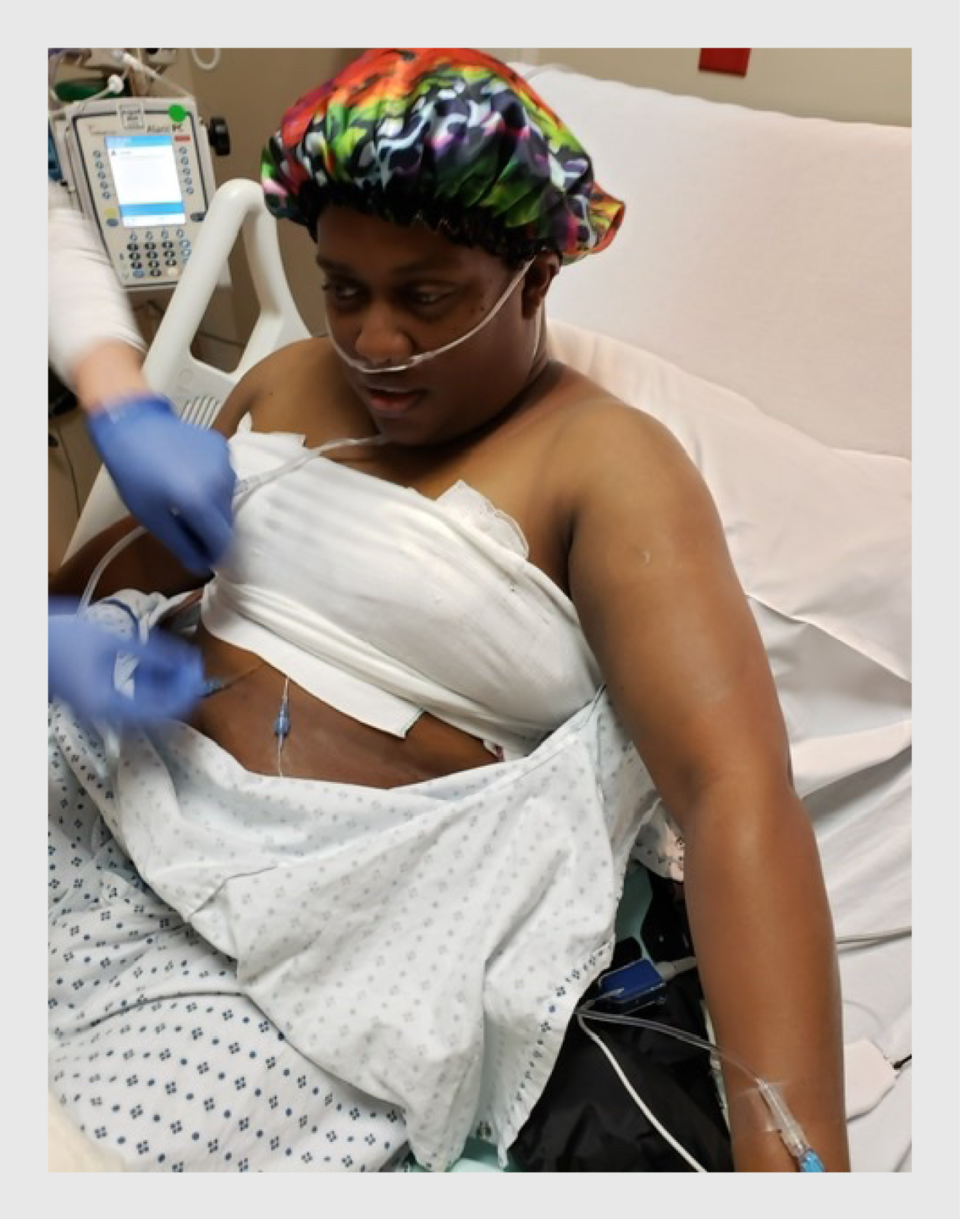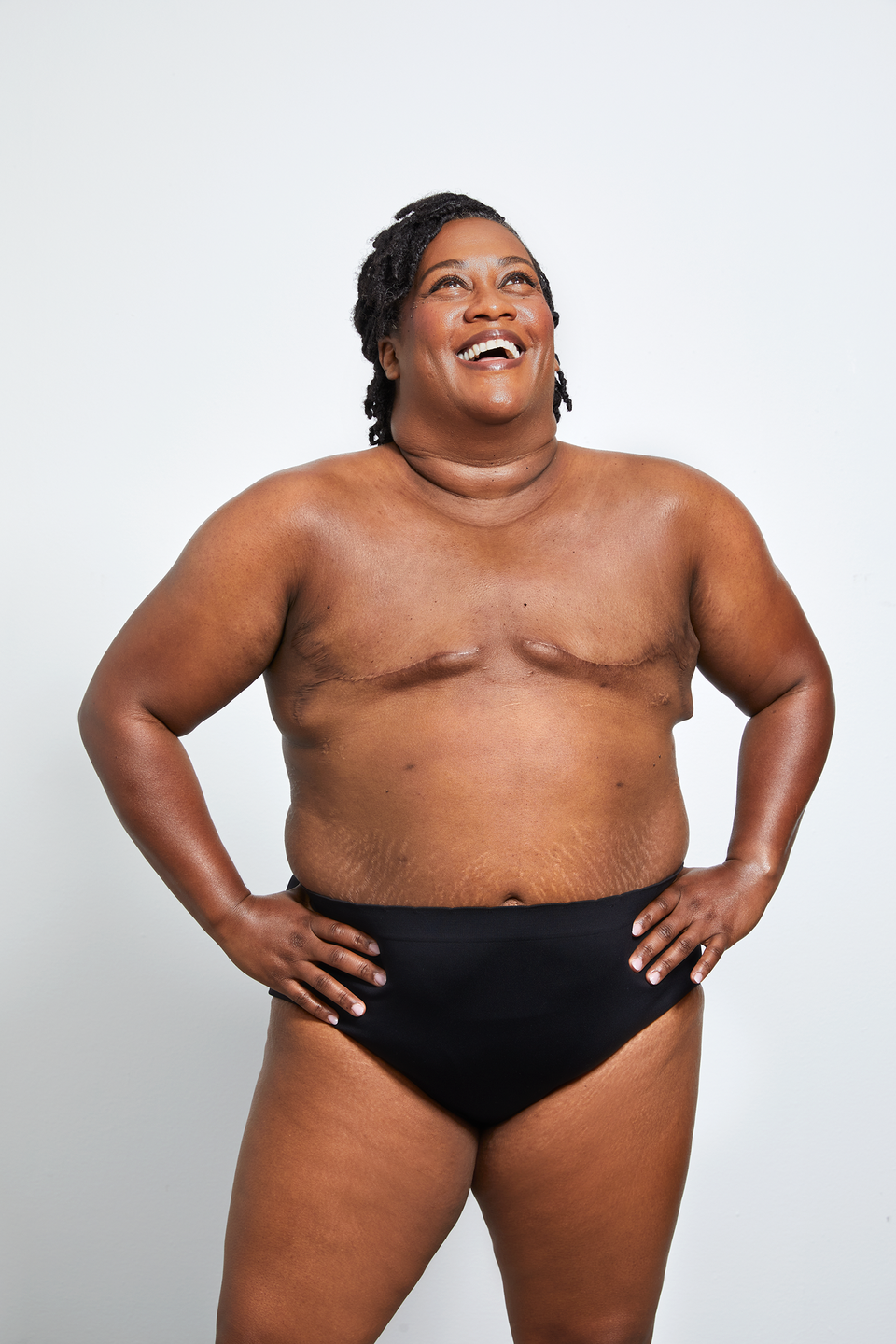‘I Went Flat After Breast Cancer And I’ve Never Felt More Confident’


Christina Miner, 46, had both breasts removed during a double mastectomy in May 2020. She opted to forgo reconstructive surgery and is now a proud “flattie.”
One August morning in 2019, after church, I finally did the thing I’d been terrified to do because I was afraid of what I might find. I gently leaned over the bed to cuff under my left breast, which had been swollen and painful for months. I didn’t have to press hard—there was already a lump in my palm. I screamed for my husband. That night, I lay curled up next to him, crying and praying.
At the clinic, the doctor lost count of how many lumps she found. When I got the call from the radiologist, I fell to my knees in the bathroom. All I could hear was “carcinoma.” Cancer. I had cancer.
Ductal carcinoma in-situ, Stage 0, ER/PR+, Grade 3, to be exact. My doctor explained that Grade 3 meant the cancer was growing fast, and Stage 0 meant it was still localized in my ducts. The surgery had to happen soon.
This wasn’t the start of my breast cancer story—that began decades ago—but it was the start of my journey to becoming a proud, double mastectomy, flat-chested, breast cancer survivor.
My breasts were removed during a double mastectomy on January 6, 2020.
The surgeon put in two expanders (little balloons of saline that stretch the skin for an eventual implant) in preparation for reconstruction surgery. I was scheduled to come back in April to get my implants.
That was the plan: mastectomy, implants, nipple tattoos. I thought that might bring back some normalcy. But as the world ground to a halt in March of 2020 as the COVID-19 pandemic set in, everything went on hold. It turned out to be a blessing in disguise.
After surgery, I never stopped hurting. I started having intense headaches, extreme fatigue, gastrointestinal issues, difficulty walking, and heaviness in my chest. I was losing weight. I remember trying to scoop ice cream, and I just fell apart in the kitchen, crying because I wasn’t able to do even that simple task. I had to take everything one second at a time.

During my telehealth appointments, I tried to explain that something was off.
But it was hard for doctors to see what was going on over a screen. By the end of April, I was placed first in line for the surgery to take the expanders out.
Two weeks before surgery, my health got worse. The skin around my left breast became leathery, tightening and hardening. Then, the skin began twisting. I could feel fluid swishing around. It felt like the implant was coming out of my chest, and I didn’t know how much longer I could withstand it.
By the time I walked into the hospital for surgery on May 6, my doctor had decided that I had breast implant illness and capsular contracture, which is when the scar tissue capsule that forms around the implant tightens and squeezes the implant. While there’s no official medical diagnosis for breast implant illness aside from a collection of symptoms, my doctor listened to me.
“This is making you sick,” she said.
I spent nearly two decades struggling with breast pain before my cancer diagnosis.
From 2005 to 2015, I brought up my symptoms at every doctor’s appointment. But I was told “that happens sometimes,” or that I had dense breasts, fibrocystic breast tissue, and another condition causing benign lesions. So, I lived with the pain—which is so often the case for Black women, whose discomfort has historically been pushed aside and ignored. It feels as if society doesn’t hear us, especially when it comes to pain. Then came the cancer.
Before the expander removal surgery, I told the doctor that I would do anything to feel better and asked her to do whatever was best for my health. But the damage, scarring, and inflammation in my body made the decision easy for both of us.
“I will never put another implant in your chest,” she told me when I woke up. Instead, my doctor left "angel wings," or "dog ears," which are little flaps of skin on the side of my chest in case I wanted reconstruction with my own body tissue later. Everything else was gone.
My surgeon took me flat, but it’s not quite an aesthetic flat closure (AFC), where a surgeon removes extra skin, pockets of fat, and excess tissue and tightens and smooths out the remaining tissue to create a flat chest wall. I’ll have a revision if I want true AFC, but for now, I’m happy with my healthy chest and angel wings.

At first, I had a really hard time feeling like a woman after going flat.
My breasts had been trying to kill me, but they were still part of my identity. This was how God made me, and that was stripped away. I had struggled with low confidence and self-esteem in the past, and this felt like the ultimate test.
My new routine started when I was first diagnosed with breast cancer. First thing in the morning, I would just sit still and breathe—even if it was only for five minutes. Then, I’d go out for my daily walk. As I walked, I’d pray. Other times, I just enjoyed nature. And through the beauty of it all, and through the darkness of it all, I discovered who I was.
As my body began to recover, I started healing mentally and spiritually, too. There was no big moment of acceptance. It took a lot of work. But I had to be okay with myself.
These days, I’m cancer free. I’m working with a trainer, dietitian, and wellness coach to regain strength and stay healthy. I'm a different person.
But there are still times, especially when I’m buying clothes, when it can be discouraging. There’s not a lot for us “flatties” out there. V-necks fall really low on the neckline and other shirts bunch up. I look for swimsuits with a distracting pattern up top. Initially, intimacy with my husband was hard.
While I did a lot of big healing work on my own, social media became a place where I could tell my story, and find answers and community, especially with other “flat” survivors. I’m now an ambassador for Stand Tall AFC, a campaign to de-stigmatize the loss of breasts to cancer treatment and normalize going flat, as well as a co-facilitator of the "Newly Diagnosed Group" for a group called Here for The Girls, an organization for breast cancer patients under the age of 51.
I’m not just a survivor, I’m a victor.
Eventually, I learned to ignore the voice in my head asking what people think of my flat chest and scars. It took a lot of loss to discover how resilient and beautiful and confident I really am.
When I got my diagnosis, I knew this was no longer just about me. I share my story because hearing about other people’s journeys helped me keep moving. And maybe something in my story will help you go forward, too.
For the women going flat, know your breasts do not define you. You have choices and options. It’s your right to advocate for yourself and to be heard. You don’t have to go back to “normal,” because there is no normal after breast cancer. And you don't have to have implants to feel beautiful.
Right now, I feel the strongest, most beautiful and the most confident—on the inside and outside—in my life. I never used to take photos of myself in sports bras. Now, I’m the Sports Bra Queen on Instagram, sharing my story. I’ve never shown photos of my bare chest before today. But I’m sharing my scars because they’re beautiful, and because they speak a message. They speak of resilience, life, and freedom. And I want them to speak for those who can’t.
You Might Also Like


